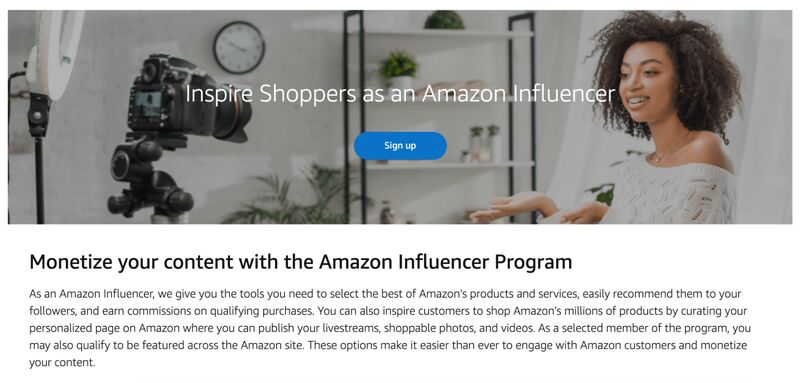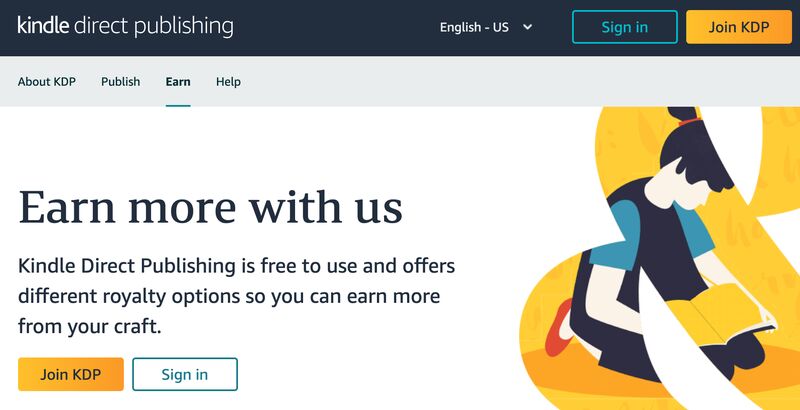Amazon remains the biggest online marketplace in the US, and independent sellers can tap into its wide market reach, new features, and lines of revenue even without physical inventory.
Some ways to sell products on Amazon without holding inventory yourself include dropshipping, print on demand, affiliate marketing, Kindle Digital Publishing, and offering digital products. We dive into each method below.
Dropshipping
Dropshipping is a popular ecommerce model that involves marketing and selling products and then using an outsourced company to manage the order fulfillment process. It gives sellers lots of flexibility as they don’t need to be tied to managing physical inventory.
Amazon allows for dropshipping on its marketplace, yet only 19% of sellers tap into this strategy. If you’re considering dropshipping, make sure to learn about the platform’s dropshipping policy.

Amazon recommends considering several criteria when choosing a dropshipping supplier: pricing, location, shipping time, and more. (Source: Amazon)
You can combine dropshipping with Fulfillment by Amazon (FBA), Amazon’s in-house fulfillment solution. FBA has a network of 175 warehouses for efficient global sales distribution, and there’s no minimum order volume. FBA tends to be most economical for selling small, lightweight goods.
Learn more:
Print on Demand
With the print-on-demand (PoD) strategy, you create a design that is then printed on products like t-shirts, mugs, and phone cases. Like dropshipping, PoD is another approach that involves third-party help—in this case, the product is only manufactured when an order is placed, and the PoD provider handles the printing and shipping for each order.

Merch by Amazon is open to creators and small businesses. (Source: Amazon)
Amazon offers its own PoD service, Merch by Amazon. Although aimed at creators, Merch by Amazon is perfect for all kinds of brands that want to offer custom-designed products without the burden of holding and managing inventory.
Related reading:
Affiliate Marketing
Affiliate marketing is when you promote a brand’s products or services and earn a commission for every sale you influence. This is typically tracked through a referral link.
While it’s low-cost and requires zero inventory, you do need a decent-sized trusting audience that is willing to spend money on what you tell them to. That’s what makes this approach to Amazon ecommerce a viable option for creators, influencers, and entrepreneurs who already have an established loyal network.
Amazon Associates is the marketplace’s own affiliate marketing program. Affiliates can earn a commission for every sale made through their referral link.

Amazon Associates is an affiliate program that lets you monetize links to Amazon products on your content. (Source: Amazon)
There’s also the Amazon Associates Program. This program is a bit more involved, wherein the influencers get to create their own custom storefront with products they’d like to promote. They then earn a commission on sales from their storefront.
Learn more about the Amazon Influencer Program

Amazon’s influencer program allows you to create curated storefronts and shoppable social media campaigns—and you’ll earn money every time someone purchases through your links. (Source: Amazon)
Kindle Digital Publishing
If you have an idea for a book—or an idea that can be turned into a book—try Kindle Direct Publishing (KDP). This is an excellent way to make money on Amazon without having to hold, manage, or ship inventory.

KDP lets you self-publish your content and gives you control over pricing, design, and advertising. (Source: KDP)
To get started with KDP, you’ll need a concept. This can be anything from a full-blown novel to a short e-book with recipes or even a comic book or children’s book. From there, here is a general overview of the steps:
- Step 1: Sign up for a KDP account and create your KDP Bookshelf.
- Step 2: In your KDP Bookshelf, click the + Create button.
- Step 3: Enter your book details.
- Step 4: Upload and preview your book.
- Step 5: Set pricing and royalty rates.
- Step 6: Publish and list your book.
- Step 7: Promote your book.
Digital Products
You can sell digital products beyond e-books on Amazon. Digital products eliminate the need to manage and ship inventory as well as the need to use a third-party resource to fulfill orders on your behalf.
Some ideas for digital products you can sell on Amazon include the following:
- Music and audio through Amazon Music
- Apps and games as a developer
- Movies, documentaries, films, and other videos through Amazon Prime Video Direct
How to Set Up for Amazon Sales Without Inventory: Step-by-Step Process
If you want to sell on Amazon’s traditional marketplace, you’ll need to do the following:
- Step 1: Sign up for an Amazon Seller account.
- Step 2: Choose a product to sell.
- Step 3: Find your suppliers or prep your digital product or design.
- Step 4: Create your product listing(s).
- Step 5: Set up fulfillment and shipping with the necessary providers.
- Step 6: Integrate any required third-party platforms.
- Step 7: Push your store and listing live.
- Step 8: Manage sales and customer relationships.
Learn more about selling on Amazon:
Tips for Selling Items on Amazon Without Inventory
Keep the following tips and best practices in mind when starting your inventory-free Amazon business.
Choose the Right Products to Sell
You’ll have a tough time making sales if no one wants to buy your products. When you have a new business idea, consider doing some market research to validate viability and demand. While it might be tough to wait if you’re excited, doing this before you invest in bringing it to life can save you a lot of struggle.
When it comes to the ideas listed above, you’ll want to pursue products that are easy to manufacture, have consistent demand, and appeal to a specific target market.
Looking for resources to make sure you’re pursuing the right product ideas? We’ve got just what you need:
- How to Find a Niche Market
- Demand Forecasting: Models, Benefits, and How to Do It
- How to Come Up With a Business Idea
Find the Right Suppliers and Partners
Once you know what you want to sell and are ready to bring it to life, it’s important to vet your business collaborators. You want to find partners that can support and bring value to your business.
Here are some resources to help you find suppliers and partners for the scenarios listed above:
Optimize & Make Your Listings Stand Out
Amazon is a massive marketplace, which is both what makes it great and also one of its challenges. You can reach a huge audience, but you’re also competing with tons of other sellers. That’s why it’s important to do what you can to maximize visibility and engagement with your listings.
Some ways to optimize your Amazon listings or storefront include the following:
- Incorporate related keywords that people search for to find products like yours.
- Use high-quality, clear product photos that fill most of the frame.
- Write product descriptions that focus on benefits rather than features.
- Take advantage of Amazon’s tools and features for formatting and customization, both for listings and your storefront.
- Promote your listings, referral link, or storefront on other channels like social media, email, or SMS.
Frequently Asked Questions (FAQs)
These are some questions people commonly have about how to sell on Amazon without inventory.
Yes, you can sell things on Amazon without inventory. Any of the methods we listed above can help you get started without investing in physical inventory.
Yes, you can make money on Amazon without selling anything. Amazon offers the Amazon Associates and Amazon Influencers programs, which essentially function as affiliate marketing programs. You can earn a commission on sales you refer rather than from selling items yourself.
You can use dropshipping, Fulfillment by Amazon (FBA), PoD, Kindle Direct Publishing (KDP), Amazon Music, Amazon Associates, Amazon Influencers, and more if you want to sell on Amazon and don’t have a product.
The minimum inventory level to sell on Amazon via FBA depends on your historical analytics, inventory performance, stock levels, and sales volume. You can find your minimum inventory level in your Amazon Seller dashboard.
Bottom Line
You don’t need a warehouse or products on hand to start an Amazon business. In fact, many Amazon business ideas can be outsourced. If you get creative, you can sell on Amazon without worrying about physical inventory yourself. You might even try a combination of the ideas above to see what suits you best.